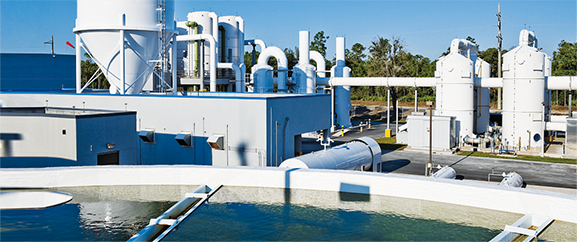Do you know the requirements of the pharmaceutical industry for the purification of water equipment and water quality indicators?
Published in:2020-03-20 Category:Common problem News Center

Ⅰ. Classification and water quality index of pharmaceutical water
1. Classification of pharmaceutical water
1) Drinking water: tap water or deep well water, which is usually provided by the water supply company, or deep water, also known as raw water, and its quality must meet the national standard GB5749-85 “Sanitary Standards for Drinking Water”.
2) Purified Water: Purified water by distillation, ion exchange, reverse osmosis or other suitable methods, without any additives. The purified water can be used as a solvent or test water for the preparation of commonly used pharmaceutical preparations, but not for the preparation of preparations.
Purified water is prepared by ion exchange method, reverse osmosis method, ultrafiltration method, etc., and is generally called deionized water. Pharmaceutical purified water equipment is designed with a special distillation method. The distillation process of distilled water is generally called distilled water.
3) Water for Injection: Water prepared from purified water as raw water, distilled and condensed by a specially designed distiller and cooled by membrane filtration.
Water for injection can be used as a solvent for preparing injections.
4) Sterile Water for Injection: water for injection prepared according to the injection production process.
Sterilized water for injection is used to sterilize the solvent of powder or the diluent of injection solution.
2. Water quality standards for pharmaceutical water
1) Drinking water: should meet the national standard of the People’s Republic of China “Sanitary Standards for Drinking Water” (GB5749-85)
2) Purified water: It should meet the purified water standard contained in “2000 Chinese Pharmacopoeia”.
In the water-making process, on-line detection of the resistivity value of purified water is usually adopted to reflect the concentration of various ions in the water. The resistivity of the purified water in the pharmaceutical industry should usually be ≥0.5MΩ.CM / 25 ℃, and the resistivity of the purified water used for the flushing of injection and eye drops containers should be ≥1MΩ.CM / 25 ℃.
· Water for injection: It should meet the standards for water for injection contained in the 2000 Chinese Pharmacopoeia.
Ⅱ. GMP requirements for pharmaceutical water preparation devices
1. The structural design should be simple, reliable and easy to disassemble.
2. In order to facilitate the disassembly, replacement, cleaning of parts, the design of the actuator adopts standardized, generalized and systematic parts as much as possible.
3. The surface of the inner and outer walls of the equipment should be smooth and flat, without dead corners, and easy to clean and sterilize. The surface of the parts should be chrome plated and other surface treatments to resist corrosion and prevent rust. Avoid using paint on the outside of the equipment to prevent it from peeling off.
4. Equipment for preparing purified water should be made of low-carbon stainless steel or other materials that have not been verified to pollute water quality. The equipment for preparing purified water should be cleaned regularly, and the cleaning effect should be verified.
5. The materials in contact with water for injection must be high-quality low-carbon stainless steel (such as 316L stainless steel) or other materials that have been verified to not pollute the water quality. The equipment for preparing water for injection should be cleaned regularly, and the cleaning effect should be verified.
6. The storage period of purified water should not be greater than 24 hours. The storage tank should be made of stainless steel or other materials that have been verified to be non-toxic, corrosion-resistant, and do not exude contaminated ions. A hydrophobic sterilization filter that does not shed fibers should be installed to protect its vent. The inner wall of the storage tank should be smooth, and there should be no dead corners and trachoma in the connecting pipe and the welding seam. Sensors showing parameters such as liquid level, temperature, and pressure that will not form stagnation water pollution should be used. The storage tank should be regularly cleaned, disinfected and sterilized, and the effectiveness of cleaning and sterilization should be verified.
7. Delivery of pharmaceutical water
1) Pharmaceutical purified water equipment should be easily cleaned and pumped with sterilized stainless steel. When using compressed air or nitrogen pressure, the purified water of water and water is used for injection, compressed air and nitrogen for purification.
2) Purified water should be transported through circulation pipes. The piping design should be concise, and blindness and death should be avoided. The pipes should be stainless steel pipes or other pipes, which are non-toxic, corrosion-resistant, non-corrosive, and contaminated. The valve should be a sanitary valve without dead angle, and the flow rate of pure water should be marked.
3) Provide pure water and water injection tube, the delivery pump should be cleaned regularly, sterilized and sterilized, and it can be put into use after passing the verification.
4) The design of the pressure vessel should be carried out by the unit and qualified personnel in accordance with the relevant regulations of the Chinese National Standards for Steel Pressure Vessels (gb150-80) of the People ’s Republic of China and the safety technical supervision regulations for pressure vessels.

 Phone
Phone Message
Message